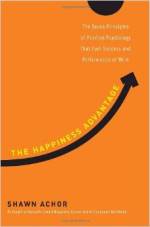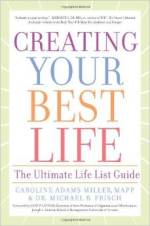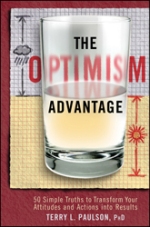Shawn Achor – Before Happiness: The 5 Hidden Keys to Achieving Success, Spreading Happiness, and Sustaining Positive Change (2013)
 In The Happiness Advantage, Shawn Achor detailed all the way that hapiness makes us more successful. In Before Happiness, he takes a step back to show us how to get happy in the first place. We have to learn to see a positive version of reality, figure out what’s meaningful to us and use that as a compass for behavior, use tactics to make our goals seem closer and more achievable, reduce negative noise, and spread our positivity to others. If we do all that, we’ll become a “positive genius.”
In The Happiness Advantage, Shawn Achor detailed all the way that hapiness makes us more successful. In Before Happiness, he takes a step back to show us how to get happy in the first place. We have to learn to see a positive version of reality, figure out what’s meaningful to us and use that as a compass for behavior, use tactics to make our goals seem closer and more achievable, reduce negative noise, and spread our positivity to others. If we do all that, we’ll become a “positive genius.”
Shawn Achor – The Happiness Advantage: The Seven Principles of Positive Psychology That Fuel Success and Performance at Work (2010)
Contrary to popular belief, it’s happiness that leads to success (and not the other way around). Happy workers are more productive, sell more, perform better as leaders, and have higher performance ratings; they get paid more and have more job security; and they’re less likely to take sick days, quit, or get burned out. To cultivate “The Happiness Advantage,” Achor teaches us to change our beliefs about our potential and purpose, scan the world for positives, and transform challenges into opportunities. With our actions, we learn to cultivate a sense of control by starting small, reduce the effort involved for good habits and increase it for bad habits, and invest in social relationships.
Caroline Adams Miller – Creating Your Best Life: The Ultimate Life List Guide (2011)
Creating Your Best Life combines the science of happiness and the science of goal-setting into one practical book to help us create a list of our life goals. It covers essential topics like what makes a good goal, how to identify the right goals for us, how to increase willpower and grit, how to take advantage of social support and environmental cues, and how to overcome obstacles in our path. The book also includes a host of worksheets and exercises to help us apply these learnings to our life.
Tal Ben-Shahar – Happier: Learn the Secrets to Daily Joy and Lasting Fulfillment (2007)
 Tal Ben-Shahar, who taught one of the most popular courses at Harvard on happiness, sets out a framework for happiness that includes pleasure and meaning. To be considered happy, we need to reconcile present and future happiness rather than being a hedonist or “rat racer.” Happiness is the ultimate currency in life, although society has come to value wealth more. To be happier, Ben-Shahar encourages us to set goals, be benevolent, cultivate our sense of worthiness, and simplify our lives. The book also looks at happiness applied to education, work, and relationships.
Tal Ben-Shahar, who taught one of the most popular courses at Harvard on happiness, sets out a framework for happiness that includes pleasure and meaning. To be considered happy, we need to reconcile present and future happiness rather than being a hedonist or “rat racer.” Happiness is the ultimate currency in life, although society has come to value wealth more. To be happier, Ben-Shahar encourages us to set goals, be benevolent, cultivate our sense of worthiness, and simplify our lives. The book also looks at happiness applied to education, work, and relationships.
Brené Brown – Rising Strong: The Reckoning. The Rumble. The Revolution. (2015)
 Rising Strong is all about the hard moments in life. When we feel some kind of negative emotion – shame, fear, or gut-stirring anger – how can we respond in a way that doesn’t hurt ourselves and others? Brown teaches us that our emotions come from the stories we tell ourselves about who we are and why things happen. It’s our task to uncover those stories by doing the hard work of reflection and introspection as we “rumble” with difficult thoughts and feelings. It’s not an easy process, but it’s one that could transform the way we connect with others.
Rising Strong is all about the hard moments in life. When we feel some kind of negative emotion – shame, fear, or gut-stirring anger – how can we respond in a way that doesn’t hurt ourselves and others? Brown teaches us that our emotions come from the stories we tell ourselves about who we are and why things happen. It’s our task to uncover those stories by doing the hard work of reflection and introspection as we “rumble” with difficult thoughts and feelings. It’s not an easy process, but it’s one that could transform the way we connect with others.
Brené Brown – Daring Greatly: How the Courage to Be Vulnerable Transforms the Way We Live, Love, Parent, and Lead (2012)
 Daring Greatly extends Brené Brown’s work on shame and teaches us how to embrace vulnerability, the uncertainty, risk, and emotionality that is part of life. We do that by learning to reduce the feeling of scarcity – of “never enough” and combatting shame. In so doing, we become “Wholehearted,” feeling worthy of love and connection. Daring Greatly also applies this theory to culture, education, work, and parenting.
Daring Greatly extends Brené Brown’s work on shame and teaches us how to embrace vulnerability, the uncertainty, risk, and emotionality that is part of life. We do that by learning to reduce the feeling of scarcity – of “never enough” and combatting shame. In so doing, we become “Wholehearted,” feeling worthy of love and connection. Daring Greatly also applies this theory to culture, education, work, and parenting.
Brené Brown – The Gifts of Imperfection: Let Go of Who You Think You’re Supposed to Be and Embrace Who You Are (2010)
 For Brené Brown, when we focus on being who we’re supposed to be, we feel shame. Our lives are dominated by what people think, perfectionism, numbing and powerlessness, scarcity, need for certainty, comparisons, exhaustion and fear-driven productivity, anxiety, “supposed to,” and the need to be cool and in control. To embrace who we are, we need to use the tools of courage, compassion, and connection – the “gifts of imperfection.” Then, we’ll be able to cultivate authenticity, self-compassion, resilience, gratitude and joy, intuition and faith, creativity, play and rest, calm and stillness, meaningful work, and laughter, song, and dance. We become “Wholehearted,” and we feel worthy of love and belonging.
For Brené Brown, when we focus on being who we’re supposed to be, we feel shame. Our lives are dominated by what people think, perfectionism, numbing and powerlessness, scarcity, need for certainty, comparisons, exhaustion and fear-driven productivity, anxiety, “supposed to,” and the need to be cool and in control. To embrace who we are, we need to use the tools of courage, compassion, and connection – the “gifts of imperfection.” Then, we’ll be able to cultivate authenticity, self-compassion, resilience, gratitude and joy, intuition and faith, creativity, play and rest, calm and stillness, meaningful work, and laughter, song, and dance. We become “Wholehearted,” and we feel worthy of love and belonging.
Mihaly Csikszentmihalyi – Flow: The Psychology of Optimal Experience (1990)
 Mihaly Csikszentmihalyi articulates his theory of “flow,” a state of optimal functioning where we feel completely immersed and engaged in what we’re doing. Achieving flow requires a match between our skills and the challenges in front of us, clear goals, immediate feedback, and a sense of control. Often, in flow experiences, our sense of self disappears and time speeds up. Csikszentmihalyi shows us how to cultivate flow in activities of the body and mind, work, solitude, social situations, and challenges. And he also explains how understanding your purpose in life can enhance flow across the board.
Mihaly Csikszentmihalyi articulates his theory of “flow,” a state of optimal functioning where we feel completely immersed and engaged in what we’re doing. Achieving flow requires a match between our skills and the challenges in front of us, clear goals, immediate feedback, and a sense of control. Often, in flow experiences, our sense of self disappears and time speeds up. Csikszentmihalyi shows us how to cultivate flow in activities of the body and mind, work, solitude, social situations, and challenges. And he also explains how understanding your purpose in life can enhance flow across the board.
Robert Emmons – Gratitude Works: A 21-Day Program for Creating Emotional Prosperity (2013)
 Robert Emmons’s second book on gratitude, Gratitude Works compiles all the new findings about gratitude and paints a more nuanced picture of how to cultivate it. In addition to the traditional gratitude journal and gratitude visit, he explores how spiritual discipline can help us become more grateful. He also goes into depth about why gratitude can be so challenging and how it serves us in our times of greatest need. The book closes with a 21-day gratitude challenge, Emmons’s recommendation for an introduction to gratitude.
Robert Emmons’s second book on gratitude, Gratitude Works compiles all the new findings about gratitude and paints a more nuanced picture of how to cultivate it. In addition to the traditional gratitude journal and gratitude visit, he explores how spiritual discipline can help us become more grateful. He also goes into depth about why gratitude can be so challenging and how it serves us in our times of greatest need. The book closes with a 21-day gratitude challenge, Emmons’s recommendation for an introduction to gratitude.
Robert Emmons – Thanks!: How the New Science of Gratitude Can Make You Happier (2007)
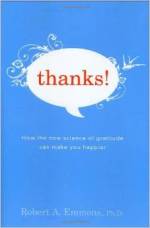 Gratitude has long been hailed as a virtue, but Robert Emmons was one of the first people to study it from a scientific perspective. This book is an introduction to the science of gratitude, starting with the basics about what gratitude actually is and what benefits it brings. Emmons also explains the benefits of gratitude journaling, gratitude visits, and being a grateful person, and how to deal with the many obstacles to gratitude we face in our lives. Throughout the book, he emphasizes that gratitude is more complex and more powerful than we might expect.
Gratitude has long been hailed as a virtue, but Robert Emmons was one of the first people to study it from a scientific perspective. This book is an introduction to the science of gratitude, starting with the basics about what gratitude actually is and what benefits it brings. Emmons also explains the benefits of gratitude journaling, gratitude visits, and being a grateful person, and how to deal with the many obstacles to gratitude we face in our lives. Throughout the book, he emphasizes that gratitude is more complex and more powerful than we might expect.
Carlin Flora – Friendfluence: The Surprising Ways Friends Make Us Who We Are (2013)
 In this book, Flora argues that friends play a “powerful and often unappreciated role” in our lives. The right friendships can help our careers, benefit our health – mental and physical – and positively shape our sense of identity. Friendfluence offers an overview of the science of friendship, spanning why we evolved to form friendships, how friendship changes over the lifespan, and how friendship can go wrong. Today, we have more opportunities than ever to form friends – online and off – and Flora believes that friendship should be recognized as one of life’s key relationships.
In this book, Flora argues that friends play a “powerful and often unappreciated role” in our lives. The right friendships can help our careers, benefit our health – mental and physical – and positively shape our sense of identity. Friendfluence offers an overview of the science of friendship, spanning why we evolved to form friendships, how friendship changes over the lifespan, and how friendship can go wrong. Today, we have more opportunities than ever to form friends – online and off – and Flora believes that friendship should be recognized as one of life’s key relationships.
Elaine Fox – Rainy Brain, Sunny Brain: How to Retrain Your Brain to Overcome Pessimism and Achieve a More Positive Outlook (2012)
 Elaine Fox explains the interplay of our reward-driven sunny brain and our fear-driven rainy brain in this book, which represent optimism and pessimism. The sunny brain centers on the nucleus accumbens and runs on dopamine and opiods, while the rainy brain is run by the amygdala. Our preference for one or the other constantly affects what we pay attention to and remember, and attuning to the positive things in life can improve our well-being, resilience, and performance. Luckily, thanks to the brain’s plasticity, we can learn optimism through practices like mindfulness, emotion regulation, and therapy.
Elaine Fox explains the interplay of our reward-driven sunny brain and our fear-driven rainy brain in this book, which represent optimism and pessimism. The sunny brain centers on the nucleus accumbens and runs on dopamine and opiods, while the rainy brain is run by the amygdala. Our preference for one or the other constantly affects what we pay attention to and remember, and attuning to the positive things in life can improve our well-being, resilience, and performance. Luckily, thanks to the brain’s plasticity, we can learn optimism through practices like mindfulness, emotion regulation, and therapy.
Daniel Gilbert – Stumbling on Happiness (2006)
 We are constantly making decisions about what will make us happy in the future, but we’re actually terrible at it. When imagining the future, we focus on certain details and don’t think about others; we’re clouded by our present feelings, thoughts, and comparisons, not realizing that we might feel, think, and compare differently then. Even when we do base our predictions on how we enjoyed similar experiences in the past, our memory is flawed. And we don’t take into account our psychological immune system, the way we positively reinterpret traumatic events. In sum, our imagination is so bad that we would have more success simply asking people who are currently having an experience about their happiness, rather than trying to predict our own.
We are constantly making decisions about what will make us happy in the future, but we’re actually terrible at it. When imagining the future, we focus on certain details and don’t think about others; we’re clouded by our present feelings, thoughts, and comparisons, not realizing that we might feel, think, and compare differently then. Even when we do base our predictions on how we enjoyed similar experiences in the past, our memory is flawed. And we don’t take into account our psychological immune system, the way we positively reinterpret traumatic events. In sum, our imagination is so bad that we would have more success simply asking people who are currently having an experience about their happiness, rather than trying to predict our own.
David R. Hamilton – Why Kindness Is Good for You (2010)
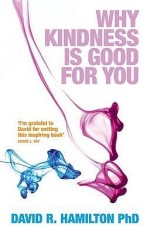 Hamilton takes us on a tour of the science of prosocial behavior, including kindness, empathy and compassion, and social connection. Along the way, we learn why we humans evolved to be kind, how love affects babies’ early development, and how connection impacts our health across the lifespan. He devotes several chapters to oxytocin, mapping its effects on the brain, the heart, and the digestive system while offering tips on how to boost our levels of this soothing hormone. In the end, we’re encouraged to become more social by practicing gratitude, forgiveness, and mindfulness; offering ourselves more self-compassion; and of course giving more hugs.
Hamilton takes us on a tour of the science of prosocial behavior, including kindness, empathy and compassion, and social connection. Along the way, we learn why we humans evolved to be kind, how love affects babies’ early development, and how connection impacts our health across the lifespan. He devotes several chapters to oxytocin, mapping its effects on the brain, the heart, and the digestive system while offering tips on how to boost our levels of this soothing hormone. In the end, we’re encouraged to become more social by practicing gratitude, forgiveness, and mindfulness; offering ourselves more self-compassion; and of course giving more hugs.
Jon Kabat-Zinn – Mindfulness for Beginners: Reclaiming the Present Moment – and Your Life (2012)
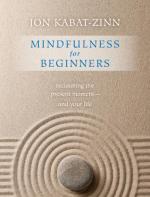 In this profound and sometimes-whimsical guide, Kabat-Zinn explains the urgency and importance of cultivating mindfulness and truly experiencing life. Along with some practical tips for meditation, he describes the seven atttitudes of mindfulness: non-judging, patience, beginner’s mind, trust, non-striving, acceptance, and letting go. Mindfulness can help us reduce stress, become more resilient, and improve our health, but it’s not easy; Kabat-Zinn is skilled at pointing out all the ways people tend to do it wrong (and the paradoxes we’ll encounter along the way), including the tendency to focus too much on the self.
In this profound and sometimes-whimsical guide, Kabat-Zinn explains the urgency and importance of cultivating mindfulness and truly experiencing life. Along with some practical tips for meditation, he describes the seven atttitudes of mindfulness: non-judging, patience, beginner’s mind, trust, non-striving, acceptance, and letting go. Mindfulness can help us reduce stress, become more resilient, and improve our health, but it’s not easy; Kabat-Zinn is skilled at pointing out all the ways people tend to do it wrong (and the paradoxes we’ll encounter along the way), including the tendency to focus too much on the self.
Stefan Klein – Survival of the Nicest: How Altruism Made Us Human and Why It Pays to Get Along (2014)
 In this book, Klein explains how humans evolved to be altruistic. He describes the constellation of traits surrounding altruism – trust, empathy, generosity, fairness, and cooperation – and explains how together they created a species who cares for the poor and writes software for free. A key part of his argument is that competition between groups of humans fostered intra-group altruism, which raises a dilemma for humans today: Is it possible for selflessness to rule, even across group boundaries? If we take the time to understand the benefits of altruism to both individuals and societies, the answer might be yes, Klein concludes.
In this book, Klein explains how humans evolved to be altruistic. He describes the constellation of traits surrounding altruism – trust, empathy, generosity, fairness, and cooperation – and explains how together they created a species who cares for the poor and writes software for free. A key part of his argument is that competition between groups of humans fostered intra-group altruism, which raises a dilemma for humans today: Is it possible for selflessness to rule, even across group boundaries? If we take the time to understand the benefits of altruism to both individuals and societies, the answer might be yes, Klein concludes.
Ellen Langer – Mindfulness (1989)
 Langer wrote her treatise on mindfulness before its most recent rise in popularity, and as such her perspective is different. She focuses much less on meditation and much more on the mental attitudes of mindfulness: noticing new things, adopting different perspectives, and questioning assumptions, expectations, and categories. The mindlessness it opposes is a way of thinking that is rigid, automatic, and ultimately boring. She explains how mindfulness can reduce prejudice, make us more creative and successful, and improve health and well-being.
Langer wrote her treatise on mindfulness before its most recent rise in popularity, and as such her perspective is different. She focuses much less on meditation and much more on the mental attitudes of mindfulness: noticing new things, adopting different perspectives, and questioning assumptions, expectations, and categories. The mindlessness it opposes is a way of thinking that is rigid, automatic, and ultimately boring. She explains how mindfulness can reduce prejudice, make us more creative and successful, and improve health and well-being.
Francois Lelord – Hector and the Search for Happiness: A Novel (2010)
 A dissatisfied psychiatrist goes on a trip around the world, looking to gain insights into happiness. Along the way, he falls in love, gets kidnapped, and learns enough about happiness to impress an old Chinese monk.
A dissatisfied psychiatrist goes on a trip around the world, looking to gain insights into happiness. Along the way, he falls in love, gets kidnapped, and learns enough about happiness to impress an old Chinese monk.
Matthew D. Lieberman – Social: Why Our Brains Are Wired to Connect (2013)
 In Social, Lieberman looks to the brain to demonstrate that humans are hardwired for social life. The pains and pleasures of social life, for example, register in our brains much the same way physical pain and pleasure do. Our minds have specific resources devoted to understand what’s going on in other people’s heads. And our very sense of self is tied up with what others think of us and the beliefs and values of our social group. Social connection is the route to happiness, business success, and successful education, Lieberman argues, yet we often fail to recognize just how social we are.
In Social, Lieberman looks to the brain to demonstrate that humans are hardwired for social life. The pains and pleasures of social life, for example, register in our brains much the same way physical pain and pleasure do. Our minds have specific resources devoted to understand what’s going on in other people’s heads. And our very sense of self is tied up with what others think of us and the beliefs and values of our social group. Social connection is the route to happiness, business success, and successful education, Lieberman argues, yet we often fail to recognize just how social we are.
Sonja Lyubomirsky – The How of Happiness: A New Approach to Getting the Life You Want (2007)
 The How of Happiness starts with the premise that 40% of our happiness is determined by intentional activity, with 50% determined by genetics and 10% by circumstances. We can manipulate that 40% by performing various happiness-enhancing strategies that have been tested by research, ranging from gratitude and savoring to kindness and spirituality. In order for them to work, we have to choose strategies that we find natural, enjoyable, and valuable, and vary the timing and variety until they become serious habits.
The How of Happiness starts with the premise that 40% of our happiness is determined by intentional activity, with 50% determined by genetics and 10% by circumstances. We can manipulate that 40% by performing various happiness-enhancing strategies that have been tested by research, ranging from gratitude and savoring to kindness and spirituality. In order for them to work, we have to choose strategies that we find natural, enjoyable, and valuable, and vary the timing and variety until they become serious habits.
Terry Paulson – The Optimism Advantage: 50 Simple Truths to Transform Your Attitudes and Actions into Results (2010)
In The Optimism Advantage, Terry Paulson explains how optimists think and act. They are realistic, resilient, grateful, purposeful, and unafraid of failure. They don’t rage against life’s unfairness or consume lots of negative entertainment. They dispute negative thoughts, reframe and learn from negative events, constantly learn, respect their bodies, take action, focus on their strengths, find pleasure in everyday situations, surround themselves with other optimistic people, and put in the effort. Read more…
Jonathan Robinson – Find Happiness Now: 50 Shortcuts for Bringing More Love, Balance, and Joy Into Your Life (2014)
Find Happiness Now is a practical book that uses positive psychology to illustrate the values, ideas, attitudes, and behaviors of happy people. It offers concrete tips for cultivating the five elements of well-being: positive emotion, relationships, flow, achievement, and meaning. Many of them take only a few minutes and can be turned into daily habits.
Martin Seligman – Flourish: A Visionary New Understanding of Happiness and Well-being (2011)
Flourish extends the work of Authentic Happiness and adds two more elements to well-being: not just positive emotion, engagement, and meaning, but also relationships and accomplishment. In this framework, the character strengths underpin all five areas, not just engagement. Seligman details practical exercises that have been shown to improve well-being and reviews how positive psychology is being applied to therapy, education, the military, biology, and politics.
Martin Seligman – Authentic Happiness: Using the New Positive Psychology to Realize Your Potential for Lasting Fulfillment (2002)
 Authentic Happiness sets out Martin Seligman’s three-part framework for well-being, composed of positive emotion, engagement, and meaning. We cultivate positive emotion by learning to be happier about the past, present, and future. We cultivate engagement by understanding and using our signature strengths, the top five of 24 traits identified by Seligman and Christopher Peterson. Meaning is a harder nut to crack, although Seligman suggests we find meaning in helping humanity become more knowledgeable, powerful, or good. The book explains how to apply these ideas to work, love, and parenting.
Authentic Happiness sets out Martin Seligman’s three-part framework for well-being, composed of positive emotion, engagement, and meaning. We cultivate positive emotion by learning to be happier about the past, present, and future. We cultivate engagement by understanding and using our signature strengths, the top five of 24 traits identified by Seligman and Christopher Peterson. Meaning is a harder nut to crack, although Seligman suggests we find meaning in helping humanity become more knowledgeable, powerful, or good. The book explains how to apply these ideas to work, love, and parenting.
Martin Seligman – Learned Optimism: How to Change Your Mind and Your Life (1991)
Learned Optimism traces the history of Seligman’s work, showing how the study of learned helpessness in dogs led to an understanding of depression and optimism. Optimism, under his definition, is a way of explaining reality that sees problems as temporary, restricted to this situation, and not our fault – and successes as the opposite. Seligman demonstrates how optimism predicts outcomes at work, school, and the doctor’s office, and in sports and politics. It concludes with methods for cultivating optimism in yourself, your children, and your organization by disputing pessimistic thoughts.
Emma Seppälä – The Happiness Track (2016)
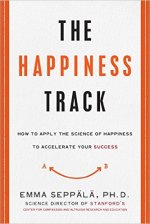 The beliefs we have about success are wrong, argues Emma Seppälä in The Happiness Track – and they are driving us to a culture of burnout, disconnection, and unhappiness. She finds solutions to these pervasive problems in the science of mindfulness, resilience, and kindness. In her view, the path to true success, productivity, and happiness comes from slowing down, tapping into our innate abilities, and using them to do more meaningful work.
The beliefs we have about success are wrong, argues Emma Seppälä in The Happiness Track – and they are driving us to a culture of burnout, disconnection, and unhappiness. She finds solutions to these pervasive problems in the science of mindfulness, resilience, and kindness. In her view, the path to true success, productivity, and happiness comes from slowing down, tapping into our innate abilities, and using them to do more meaningful work.
Shauna Shapiro and Linda Carlson – The Art and Science of Mindfulness: Integrating Mindfulness into Psychology and the Helping Professions (2009)
 Shapiro and Carlson combine their backgrounds in the scientific study and the therapeutic teaching of mindfulness to offer a uniquely rich perspective on what mindfulness means and how it can benefit therapists and care workers. To them, mindfulness involves particular intentions, attention, and attitudes in everyday life, which allow us to regulate our emotions and behavior, confront difficult situations, and focus on what’s really important. They detail various mindfulness-based psychotherapies, including MBSR, and explain how mindfulness can benefit our health and well-being, improve our relationships, and reduce stress, anxiety, and depression.
Shapiro and Carlson combine their backgrounds in the scientific study and the therapeutic teaching of mindfulness to offer a uniquely rich perspective on what mindfulness means and how it can benefit therapists and care workers. To them, mindfulness involves particular intentions, attention, and attitudes in everyday life, which allow us to regulate our emotions and behavior, confront difficult situations, and focus on what’s really important. They detail various mindfulness-based psychotherapies, including MBSR, and explain how mindfulness can benefit our health and well-being, improve our relationships, and reduce stress, anxiety, and depression.
Tali Sharot – The Optimism Bias: A Tour of the Irrationally Positive Brain (2011)
 Though we don’t realize it, most of us are optimists. And the optimism bias has its benefits: we perceive the world in positive ways and are more likely to take actions toward our rosy future. But we need to be wary of the extreme optimism and the network effects of group optimism. Sharot explains the science behind our brain’s rosy filter. Read more…
Though we don’t realize it, most of us are optimists. And the optimism bias has its benefits: we perceive the world in positive ways and are more likely to take actions toward our rosy future. But we need to be wary of the extreme optimism and the network effects of group optimism. Sharot explains the science behind our brain’s rosy filter. Read more…
Susan L. Smalley and Diana Winston – Fully Present: The Science, Art, and Practice of Mindfulness (2010)
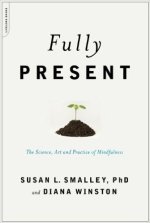 True to its subtitle, Fully Present incorporates offers something for everyone in each chapter, which includes sections on science, art, and practice. The science sections teach us the benefits of deliberate breathing, mindful movement, and mindfulness in general, particularly for people suffering from pain or mental disorders, and explain how mindfulness is linked to productivity and happiness. In the art sections, we learned the practicalities of how to sit and where to meditate, and the authors try to put into words what it feels like to truly be mindful. That’s not an easy task, so readers are encouraged to try out different meditations in the Practice sections. The book ends with some guidance on the obstacles to mindfulness and how to bring it into our everyday lives.
True to its subtitle, Fully Present incorporates offers something for everyone in each chapter, which includes sections on science, art, and practice. The science sections teach us the benefits of deliberate breathing, mindful movement, and mindfulness in general, particularly for people suffering from pain or mental disorders, and explain how mindfulness is linked to productivity and happiness. In the art sections, we learned the practicalities of how to sit and where to meditate, and the authors try to put into words what it feels like to truly be mindful. That’s not an easy task, so readers are encouraged to try out different meditations in the Practice sections. The book ends with some guidance on the obstacles to mindfulness and how to bring it into our everyday lives.

